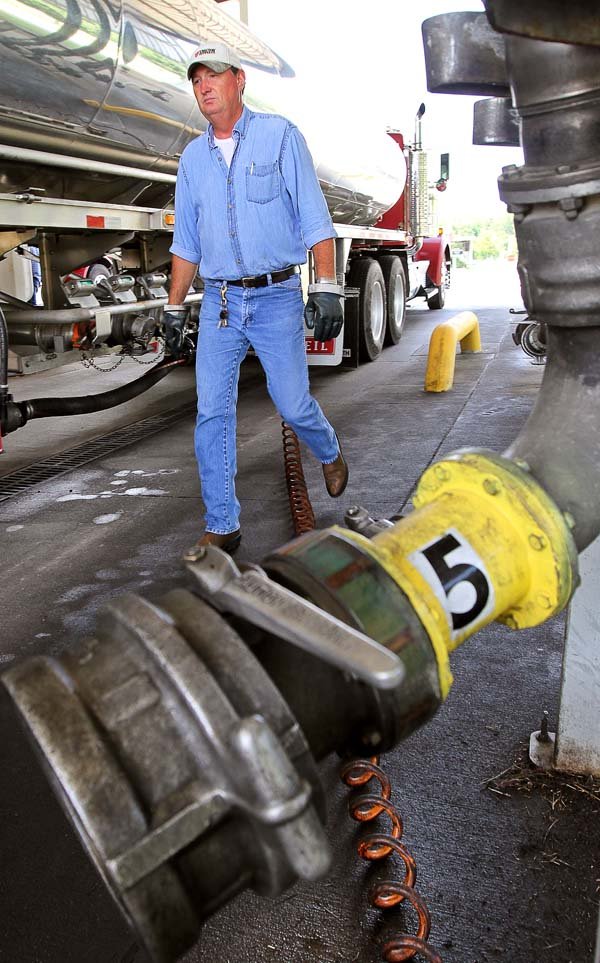LITTLE ROCK — Though gasoline prices have fallen from nearly $4 a gallon in the summer of 2008, now hovering close to $2.60 for a gallon of regular in Arkansas, filling up the tank can still be a painful experience.
But consumers aren’t the only ones who can be stung by gasoline prices.
From 2005 to about midway through 2008 was a “golden period” for oil refiners, said Ben Brockwell, director of data, pricing and information services for the Oil Price Information Service. But when demand plummeted amid the recession in the fall of 2008, refiners’ profits went with it.
Weak demand has also taken a chunk out of gas retailers’ profit margins, though these have been more stable than refiners’, according to reports from the Oil Price Information Service, based in Wall, N.J.
While refiners say they are operating on razor-thin margins, some question whether gasoline prices are higher than they should be.
“Gas prices go up, and then they never fall back down to where you think they ought to be, given the economic conditions. Where they are now, people see the new normal, and I think the industry counts on that,” said Judy Dougan, the research director of Consumer Watchdog, an advocacy group.
“It’s not a big conspiracy, but it’s people finding ways to not be noticed and look for ways to find a few more pennies a gallon,” Dougan said, noting that refiners can restrict supply if margins are low, and retailers are often slower to lower prices when oil prices are on the way down than they are to raise them when on the way up.
Refiners make their money when wholesale gasoline prices rise faster than crude oil futures, which determine prices refiners pay for crude in the open market. The difference between oil futures and wholesale gasoline, known as the “crack spread,” accounts for the majority of refiners’ profit margins.
(A commodity futures contract is an agreement to buy or sell something in the future at a price that the buyers and sellers hope is a good bet for each other.)
Because the industry has high capital costs, small changes in the prices of oil and gasoline can mean the difference between making big money and going out of business.
Kirk Latson, vice president of marketing for El Dorado-based Lion Oil, said, “It has not been a cakewalk for small refiners over the last few years, primarily because of the capital requirements to take the sulfur out of gasoline and diesel, and keep up with environmental changes.”
Supply shortages, real or anticipated, caused by hurricanes or international events can push oil prices suddenly and unexpectedly higher, cutting into refining margins.
Crude-oil prices drive gasoline prices but with a lag period, which is not advantageous for refiners, said Laurie Falter of the U.S. Department of Energy’s Energy Information Administration. “[If this is case] you would see the margins would get slimmer because the refiner would be paying more for [his] raw product, crude oil, but still not getting a higher price for their product they’re selling,” she said.
Consumers remember the summer of 2008 as when gasoline prices spiked to levels that were high enough to spark talk in Congress of investigations.
But the recession drove down prices at the pump, and the nation soon had much bigger worries.
It was actually the beginning of some difficult years for refiners and retailers. While refiner profitability from 2003 to 2007 was well above the average during the preceding decade, 2008 saw it plummet, according to an Energy Information Administration report.
Crude-oil futures rose from $99 a barrel to more than $140 a barrel in the first six months of 2008. “Retail margins are at their worst when crude prices are rising quickly. They’re best when crude prices are dropping quickly. I know people don’t believe this, but the retail market does not respond right away to what’s happening to crude oil on the wholesale side,” Brockwell said.
For refiners, fast-rising crude prices trumped higher gasoline prices in 2008: While gasoline prices rose drastically from 2007 to 2008, crude-oil prices rose by more.
The gross margin, the difference between the price refiners receive for gasoline and other products and the cost of raw materials that refiners had to purchase, fell nearly 12 percent in 2008 from 2007, though margins were still high relative to previous years, according to a report from the Energy Information Administration.
Things got worse for refiners in 2009, when margins fell to “exit-the-business levels” for some refineries, according to a November 2009 report from Baker & O’Brien Inc., a Houston-based energy-consulting firm. Margins fell by more than $8 a barrel from the fourth quarter of 2008 to the fourth quarter of 2009.
Latson, of Lion Oil, said refiners are optimistic that their margins will start inching up again. The first quarter of 2010 has seen improved refiner performance, as closing refineries reduced production to levels more in line with demand, and the price difference between light and heavy crude widened again, according to a May report from Baker & O’Brien.
Relatively constant retail prices coupled with lower wholesale prices have made retailers’ margins more stable this year, Brockwell said.
Business, Pages 25 on 07/22/2010

